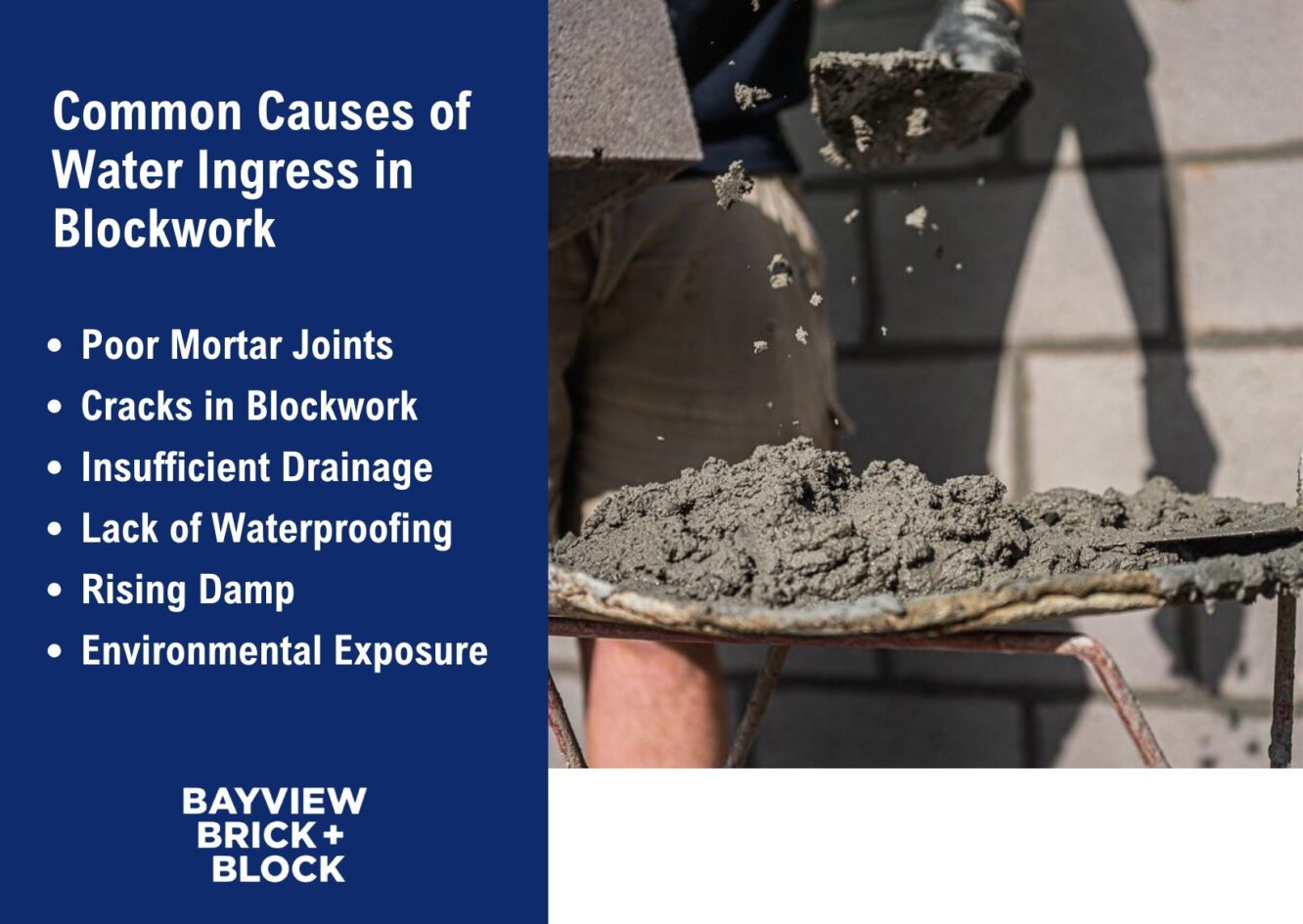You waterproof a block wall by applying the right combination of sealants, membranes, and drainage systems to create a barrier against moisture. Proper preparation, including cleaning the surface and repairing cracks, ensures effective adhesion. Professional blocklaying companies know that choosing between internal and external methods depends on the location and severity of water ingress.
Our blog explores common causes of moisture problems, compares waterproofing techniques, and highlights the importance of maintenance for lasting protection.
Common Causes of Water Ingress in Blockwork
Water ingress in blockwork often results from issues related to construction practices, material degradation, or environmental factors. Identifying these causes is essential for preventing long-term structural problems.
Below are some of the most common reasons moisture penetrates block walls.

Poor Mortar Joints
Uneven or improperly mixed mortar can create gaps, allowing water to seep through the joints. Over time, weathering can erode the mortar, worsening the problem. Maintaining blocklaying efficiency by using consistent techniques and quality materials ensures better joint integrity and prevents moisture intrusion.
Cracks in Blockwork
Small cracks in blocks develop due to settling, thermal expansion, or heavy impacts. These cracks become entry points for water, especially during prolonged wet weather. Addressing cracks early with suitable fillers or sealants reduces further moisture penetration.
Insufficient Drainage
Without adequate drainage, water builds up around the base of a wall and increases hydrostatic pressure. This pressure forces moisture through the blocks, particularly at ground level. Installing proper drainage systems helps to redirect water away from the structure.
Lack of Waterproofing
Neglecting to apply a waterproof membrane or coating leaves blockwork vulnerable to moisture absorption. Over time, this can lead to damp patches, mould growth, or even structural weakening. Ensuring walls are treated with waterproofing solutions during construction provides essential protection.
Rising Damp
Groundwater can move upwards through blocks if there is no damp-proof course. This condition often results in discolouration, peeling paint, or crumbling materials near the base of walls. A properly installed and maintained damp-proof barrier prevents moisture from travelling upwards.
Environmental Exposure
Constant exposure to heavy rain, wind, and salt spray can wear down the block surface and protective coatings. This exposure accelerates water ingress, particularly in coastal or high-rainfall regions. Regular maintenance and the use of weather-resistant materials mitigate these effects.
Internal vs. External Waterproofing Methods
Internal waterproofing involves treating the inside of a block wall to prevent moisture from penetrating into a building. This method often uses sealants, coatings, or cavity drain systems to block or redirect water already inside the structure. It works well for retrofitting older walls or addressing minor leaks but does not stop moisture from entering the block itself, which can still lead to long-term deterioration.
In contrast, external waterproofing focuses on creating a barrier outside the wall to stop water from reaching the blockwork. Techniques include applying waterproof membranes, installing drainage systems, and using water-resistant coatings. By protecting the wall’s outer surface, this method prevents moisture absorption and reduces structural damage over time. Combining both approaches, in some case,s provides a more comprehensive solution for lasting protection.
Long-Term Maintenance for Moisture Protection
Keeping blockwork protected from moisture requires consistent upkeep to avoid costly repairs. Regular inspections and timely action help prevent water ingress and structural issues. Key maintenance practices include:
Inspect walls regularly for cracks, damaged mortar, or damp spots to address problems early.
- Reapply waterproof coatings or sealants as they wear down to maintain an effective moisture barrier.
- Clear drainage systems, including surface channels and subsurface pipes, to avoid water pooling near walls.
- Clean surfaces to remove dirt and organic matter, reducing the risk of mould or mildew growth.
Addressing these tasks promptly extends the lifespan of blockwork and ensures lasting protection.

